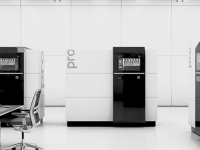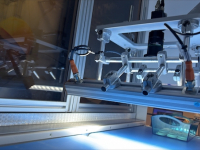
December 1, 2016
Whether the project is to design a nextgeneration jet engine, a cutting-edge medical device or an industrial pump, there’s no disputing the dawn of a new age of innovation. Even the simplest products now incorporate sensors and software, and now devices that were previously standalone are being connected and integrated into a broader
Internet of Things (IoT) ecosystem. To keep up with and capitalize on all of these changes, engineering teams are transforming traditional workflows to favor new digitaldriven design processes.
The effects of digital transformation are reverberating across industries as companies seek to disrupt existing business models and reinvent core business processes to improve performance, gain entrance into untapped markets, and keep up with the accelerated pace of change. According to research from International Data Corp. (IDC), worldwide spending on digital transformation technologies will surge to more than $2.1 trillion in 2019 with a compound annual growth rate (CAGR) of 16.8% over the 2014 to 2019 timeframe. While the effects of digitalization are rippling across industries, IDC research cited discrete manufacturing, process manufacturing and transportation as the segments most actively engaged in sweeping transformation.
Fill out the information below to download the resource.
Latest News









